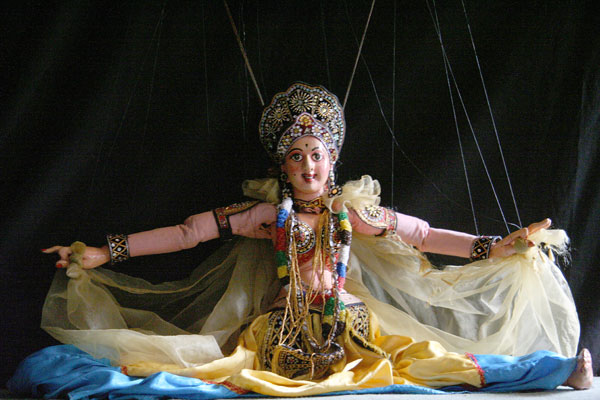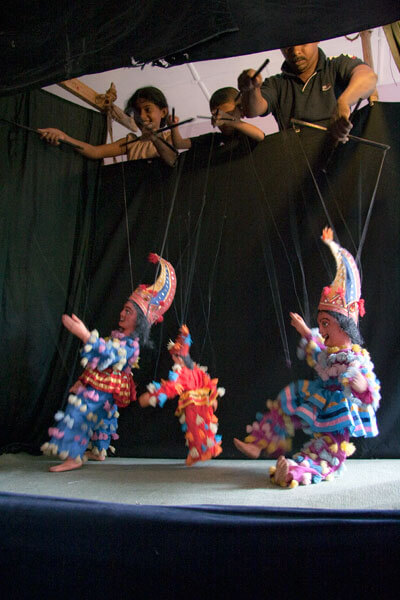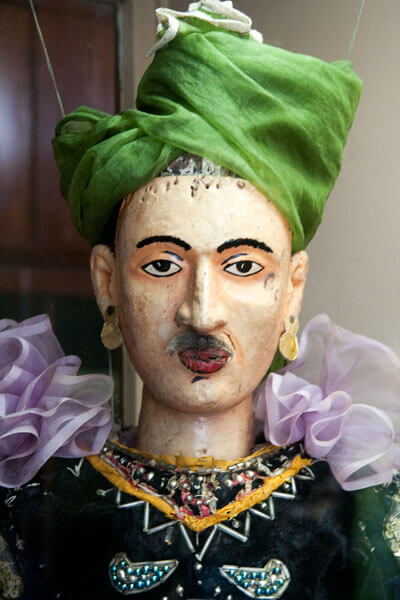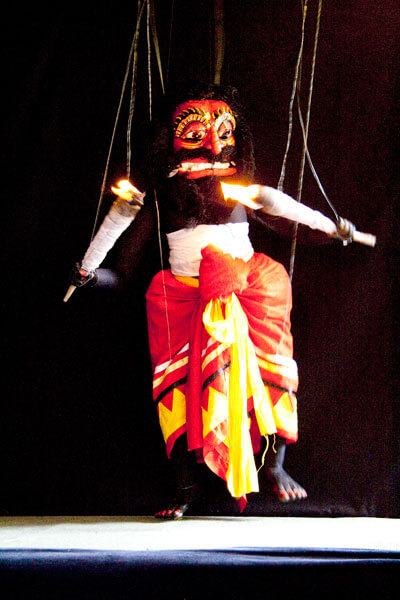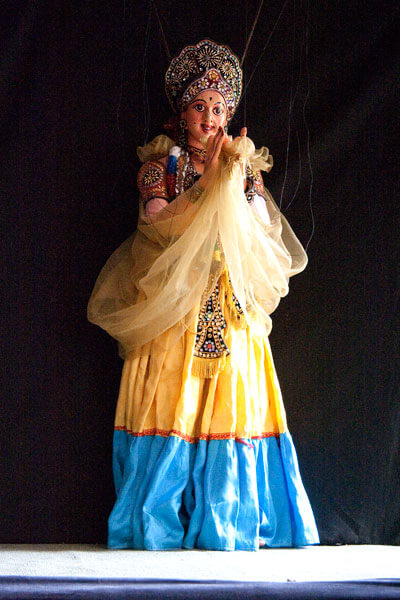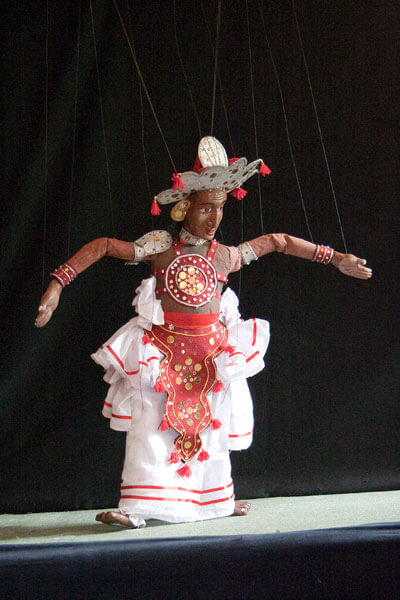Rukada, the Marionette Theatre
- The opening dance of a marionette theatre performance is provided by a Tamil danseuse Jukka O. Miettinen
- The jesters’ dance. The marionettes are operated from above by means of strings Jukka O. Miettinen
Sri Lanka has its own form of marionette theatre and its puppets are called rukada or “miniature figures”. Like all marionettes, rukadas are also operated from above by means of strings. The golden age of the marionette theatre was in the late 19th century and the early 20th century. Nowadays only a few groups perform on the southern coast of Sri Lanka, mainly in the vicinity of the village of Ambalangoda.
History
The present form of Sri Lanka’s marionette theatre stems from the late 18th century. However, textual sources mention that mechanical puppets had been used as entertainment during religious festivities as early as the 12th century AD. The present form is believed to have been introduced to Sri Lanka from South India by the ruling Tamil family of Kandy, the last independent kingdom of the island.
By the mid-20th century full-length puppet performances became rare and different kinds of variety shows, consisting mainly of short stock numbers, gained popularity. The marionette theatre is still alive in this form. Shows can sometimes be seen during temple fairs and other religious festivities but the performances are mostly aimed at tourists. Lack of public support has put the marionette theatre in great danger of becoming extinct.
The Repertoire
- A scene from a long marionette play Jukka O. Miettinen
Like most forms of Indian puppetry, the marionette theatre of Sri Lanka also imitates forms of live theatre. The first form it imitated was nadagama, a South Indian form of recited folk theatre with fantastic semi-historical plots. The next form was nurthi, a spoken Parsi folk theatre tradition from Bombay (Mumbai). The former was performed without any stage décor while the latter used painted backdrops.
- An old, large-sized puppet, Colombo Museum Jukka O. Miettinen
Many of the early rukada plays were set in faraway, exotic European countries. Later, Buddhist Jataka stories were also adapted for the marionette stage. Historical themes concerning the history of Kandy also became popular. The most important example of these historical plays is the Ahalepola nadagama, published by Pilippu Singho in 1870. It deals with the tragic end of one of Kandy’s ruling families, the Ahalepolas.
Video clip: A modern puppet imitating a demon dancer Veli Rosenberg
- A modern puppet imitating a demon dancer Jukka O. Miettinen
After the decline of the nadagama tradition puppet theatre adapted characters and dances from theatre forms that were still living, such as kolam, sanni and the Kandyan dances. Nowadays full-length puppet plays are very rare and the shows consist of short stock numbers, such as the opening dance of a Tamil danseuse, derived from nadagama theatre, and short dances of a jester and sanni demons, as well as scenes with comical kolam figures.
The Stage and the Puppets
- A large, old-style puppet of the Tamil danseuse Jukka O. Miettinen
During the golden age of the marionette theatre, at the end of the 19th and the beginning of the 20th centuries, there existed permanent theatre halls for the marionette theatre. The stage could be as wide as ten metres and several puppeteers were needed to manipulate the numerous puppet characters.
Today small permanent stages can be found in some of tourist spots in the Amabalangoda region as well as in the houses of the few still active puppeteer families. Otherwise, marionettes now perform mainly on small movable stages constructed of bamboo, wood, and curtains. The puppeteers manipulate the marionettes from behind a curtain or a backdrop, which hangs at the back of the stage.
In former times, when large permanent puppet stages were in existence, the puppets could be over one metre tall. Later, when the marionette theatre has been performed mainly on smaller temporary or portable stages, the puppets have been made to a smaller scale. They are mainly from 30 to 50 centimetres tall.
- A modern, small marionette representing a Kandyan dancer Jukka O. Miettinen
The heads, bodies and arms of the puppets are carved of light wood. Their costumes resemble those of live actors. In earlier times, when the Portuguese and, later, British influence was apparent, the puppets had an almost European touch. Later, when the marionette theatre adapted themes from local dances and kolam and sanni theatre, the style of the puppets has increasingly imitated the costumes, masks, and general aesthetics of these, mainly indigenous, traditions. The rukada marionette tradition was included in UNESCO list of the Intangible Cultural Heritage of Humanity in 2018.
